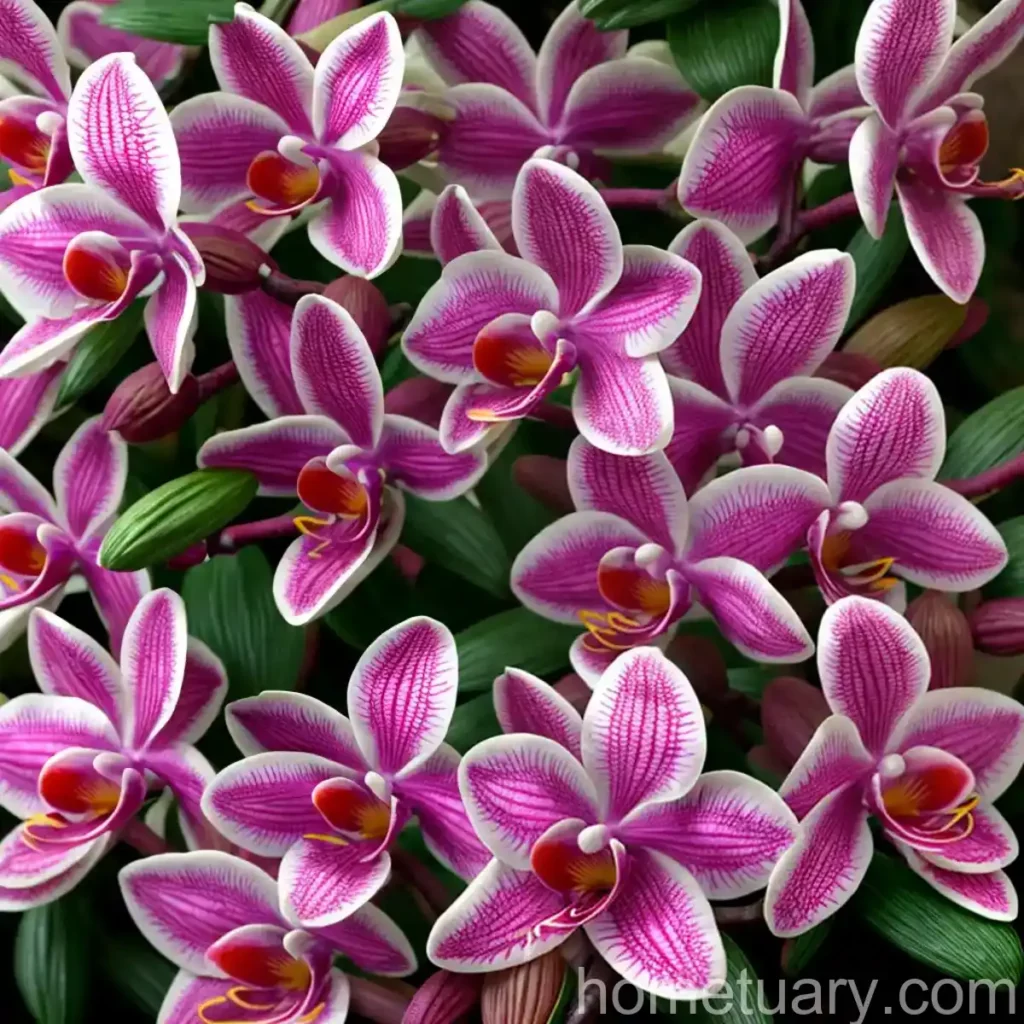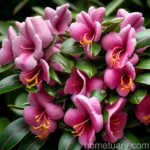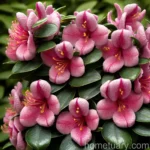All About Deciduous Azalea (Rhododendron ‘Orchid Lights’)
Introduction
Rhododendrons are a diverse group of woody plants widely celebrated for their vibrant and showy flowers. In this blog post, we will focus our attention on the deciduous azalea variety, specifically the Rhododendron ‘Orchid Lights’. We will delve into its cultural requirements, uses, maintenance, and interesting facts. Let’s explore this charming plant and all the facets associated with its care and cultivation.
What is a Deciduous Azalea (Rhododendron ‘Orchid Lights’)?
The Rhododendron ‘Orchid Lights’ is a delightful deciduous azalea hybrid that is well-loved for its spectacular spring blooms. This variety is a member of the Rhododendron genus and is renowned for its stunning array of flower colors and sweet fragrance. As a deciduous plant, it sheds its leaves in the fall, adding an extra element of seasonal interest to its already impressive display.
Key Takeaways – Deciduous Azalea (Rhododendron ‘Orchid Lights’)
Before we delve into the details of its culture, uses, and maintenance, let’s consider the key takeaways about the deciduous azalea (Rhododendron ‘Orchid Lights’).
- Common Name: Orchid Lights Azalea
- Plant Type: Deciduous shrub
- Flower Type: Showy, fragrant, and colorful spring blooms
- Cultural Interest: Ornamental plant with exceptional garden landscaping appeal
- Species: Rhododendron
- Maintenance: Low maintenance shrub, suitable for ornamental gardens
Now, let’s explore the various aspects of its care and cultivation to understand how to best grow and enjoy this beautiful plant.
Culture
Cultural practices play a significant role in the successful cultivation of the deciduous azalea ‘Orchid Lights’. Understanding its specific cultural needs is essential for ensuring vibrant blooms and healthy growth.
Water
Proper watering is crucial for the well-being of the deciduous azalea. It is generally recommended to provide consistent moisture, especially during dry periods, without saturating the soil. One of the best watering practices for this plant involves utilizing a soaker hose or drip irrigation to deliver water directly to the root zone, thereby preventing foliage wetting and minimizing the risk of disease.
Sunlight
Deciduous azaleas, including the ‘Orchid Lights’ variety, often thrive in partial shade or filtered sunlight. They prefer a location with dappled sun, especially during the hottest part of the day. It’s essential to select a planting site that offers the right balance of light to promote healthy growth and prolific flowering.
Fertilizer
Appropriate fertilization can significantly impact the growth and blooming of deciduous azaleas. Using a balanced, slow-release fertilizer formulated for acid-loving plants in the spring can provide the necessary nutrients for healthy foliage and abundant flowering. Additionally, incorporating organic matter into the soil during planting and top-dressing with compost can promote optimal growth.
Soil
The soil requirements for deciduous azaleas are crucial for their overall health. They prefer well-drained, acidic soil with a pH range between 4.5 to 6.0. Amending the soil with organic matter, such as peat moss or compost, can enhance soil structure, aid in moisture retention, and contribute to a suitable pH level. It is advisable to conduct a soil test to determine its composition and pH before planting.
Pruning
Pruning is an integral aspect of deciduous azalea care. Regular pruning can help maintain the plant’s shape, improve air circulation, and encourage vigorous growth. It is recommended to prune immediately after flowering to avoid interfering with the development of next year’s flower buds. Removing spent flowers can also contribute to a tidier appearance and promote additional blooming.
Propagation
Propagating deciduous azaleas, such as the ‘Orchid Lights’ variety, can be accomplished through various methods, including seed propagation, softwood cuttings, and layering. Each propagation technique offers its own advantages and challenges, and choosing the appropriate method can depend on the desired outcome and resources available. Proper timing, suitable growing medium, and environmental conditions are critical factors for successful propagation.
Container Popularity
Deciduous azaleas, particularly the ‘Orchid Lights’ variety, have gained popularity among gardeners and landscapers for their exquisite blooms, compact growth habit, and adaptability to container gardening. The eye-catching display of spring flowers and the ability to thrive in containers make them a sought-after choice for adding beauty and charm to balconies, patios, and small outdoor spaces.
Common Diseases
While deciduous azaleas like the ‘Orchid Lights’ variety are relatively low-maintenance, they can be susceptible to certain diseases, particularly those related to fungal pathogens. Some common diseases that can affect these plants include:
- Powdery Mildew: A fungal disease that manifests as a powdery white coating on the foliage, often in humid conditions.
- Leaf Spot: Caused by various fungal pathogens, resulting in dark spots on the leaves and potential defoliation.
- Root Rot: Occurs in poorly drained soils and can lead to root damage and decline in plant health.
Disease Diagnosis
Diagnosing diseases in deciduous azaleas involves observing the symptoms, such as leaf discoloration, spotting, or abnormal growth, and identifying potential causal agents through visual inspection or laboratory analysis. Once a disease is identified, appropriate management strategies, including cultural practices, sanitation, and, if necessary, targeted fungicidal treatments, can be implemented to mitigate the impact of the disease and prevent its spread.
Common Pests
In addition to diseases, deciduous azaleas can also be affected by certain pests that have the potential to diminish their health and aesthetic appeal. Common pests that can target these plants include:
- Azalea Lace Bug: These tiny insects feed on the foliage, causing stippling and discoloration.
- Caterpillars: Various caterpillar species can chew on the leaves and compromise the plant’s vitality.
- Spider Mites: These arachnids can infest the foliage, leading to stippling, discoloration, and webbing.
Effective pest management strategies often involve a combination of cultural practices, regular monitoring, and, if necessary, the application of targeted pesticides or natural predators to maintain pest populations at acceptable levels.
Botanist’s Tips for Growing Deciduous Azaleas
- Soil Preparation: Ensure the planting site has well-drained acidic soil, enriched with organic matter for optimal growth.
- Mulching: Apply a layer of organic mulch around the base of the plant to retain moisture, regulate soil temperature, and suppress weed growth.
- Pruning Technique: Prune immediately after flowering to shape the plant and encourage new growth without sacrificing next year’s blooms.
- Pest and Disease Monitoring: Regularly inspect the plant for signs of pests and diseases, and take prompt action to mitigate their impact.
- Watering Practice: Provide consistent moisture, avoiding waterlogged conditions, to support healthy growth and flowering.
Fun Facts about Deciduous Azalea (Rhododendron ‘Orchid Lights’)
- The ‘Orchid Lights’ variety is known for its fragrant flowers, adding an olfactory dimension to its visual appeal.
- Deciduous azaleas are native to North America and are valued for their adaptation to various climate zones.
- Hybridization efforts have resulted in an extensive range of deciduous azalea cultivars, showcasing diverse flower colors and forms.
Links to External Resources
To expand your knowledge and appreciation of the deciduous azalea (Rhododendron ‘Orchid Lights’) and related topics, consider exploring the following external resources:
- American Rhododendron Society
- National Gardening Association
- Royal Horticultural Society
- American Horticultural Society
Conclusion
The deciduous azalea (Rhododendron ‘Orchid Lights’) stands out as a captivating ornamental plant that offers stunning spring blooms, adaptability to various growing conditions, and relatively low maintenance requirements. By understanding its cultural needs, propagation methods, and common diseases and pests, gardeners can enhance their success in cultivating this charming shrub. The joyful display of colorful and fragrant flowers, coupled with the ease of care, makes the ‘Orchid Lights’ variety a delightful addition to ornamental gardens, landscapes, and container displays.
By incorporating the insights and best practices shared in this blog post, you can embark on a rewarding journey of growing, appreciating, and showcasing the beauty of the deciduous azalea ‘Orchid Lights’ in your outdoor spaces.
Remember, the joy of nurturing and witnessing the exuberant blooms of deciduous azaleas is a celebration of nature’s artistry and the enduring appeal of ornamental plants in enriching our lives and the world around us.















